Bolivia
Welcome to our Bolivia Handy Travel Guide
The most beautiful places in Bolivia
If we can help you with any recommendations, please feel free to contact us and we’ll do our best to help.
Of course, we’ll continue to update the page with new content at every opportunity!
Bolivia at a glance
Bolivia at a glance
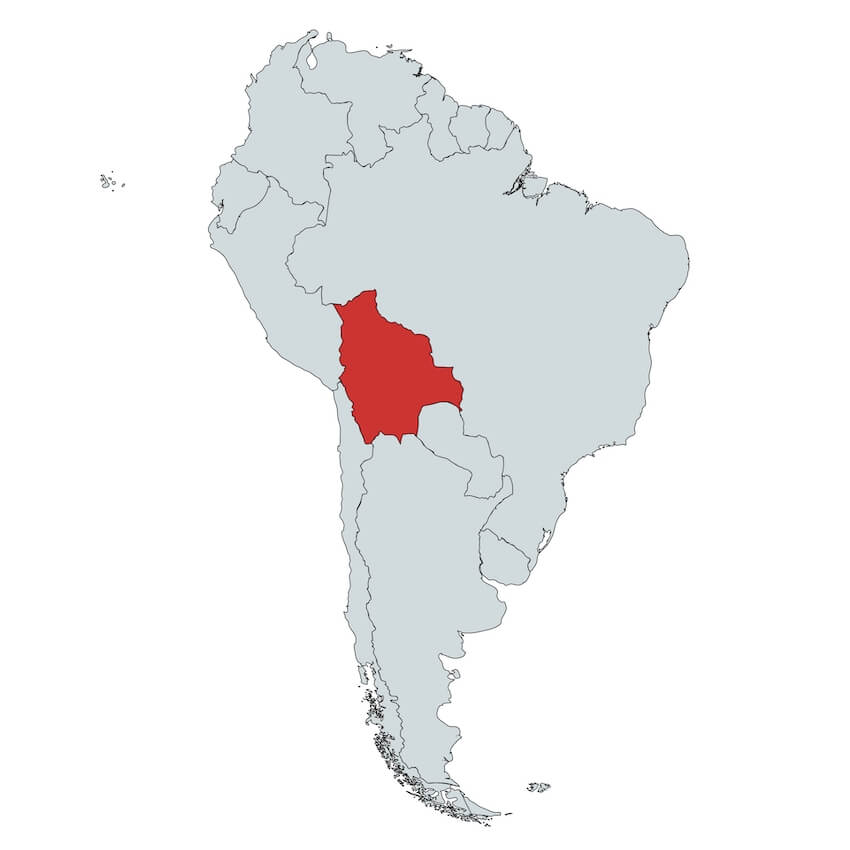
Landlocked Bolivia is a country of high-altitude deserts, Amazonian rainforest and a thriving indigenous culture. It’s a destination for travellers with a sense of adventure. And for those who don’t mind swapping creature comforts for the opportunity to indulge in some truly amazing experiences.
In this guide, we feature some of the best things to do in Bolivia. From an incredible four-day Salar de Uyuni tour to the charms of simply wandering around an indigenous market in Tarabuco.
But first, here’s a rundown of what you can expect from the five main regions of the country.
La Paz, Lake Titicaca, the Cordillera Real & the Yungas

HIGHLIGHTS
Often mistaken for the capital of Bolivia (which is actually Sucre), La Paz remains the country’s economic and political hub. And, at an altitude of 3,625 m (11,975 feet) its setting beside the snow-capped mountains of the Cordillera Real is spectacular.
Although, in all honesty, the city itself can be better described as a polluted urban sprawl with a sprinkling of high-rise glass towers and colonial buildings to break up the monotony.
Indeed, it’s the street markets of the indigenous Aymara community that perhaps warrant the most attention from visitors. Where you’ll learn as much about indigenous life and beliefs as in any museum. And where the real soul of La Paz emanates from.
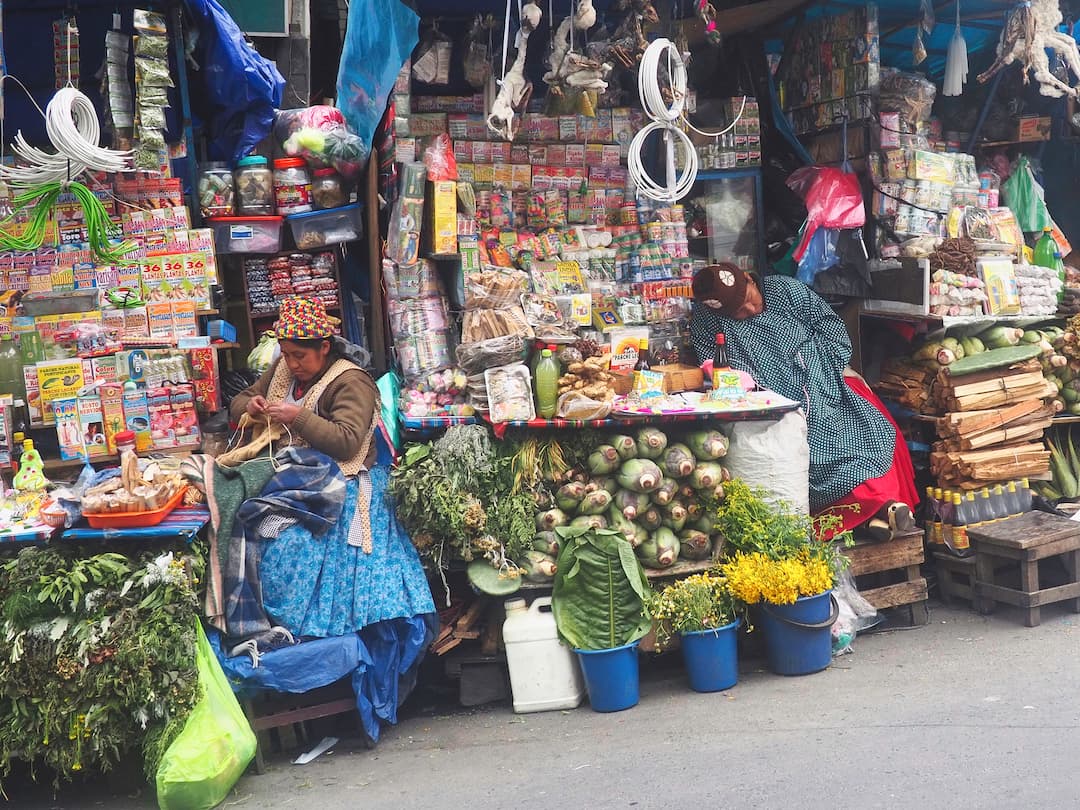
Street market in La Paz
To the northwest of La Paz, Lake Titicaca resides on both sides of the Bolivia-Peru border and is one of the top places to visit in Bolivia. Famously, it’s the world’s highest navigable lake. But it also has major significance as a sacred site for the indigenous population – as it was for the Incas.
Most visitors base themselves at the lakeside resort of Copacabana. But the real magic lies on two islands within the lake – Isla de la Luna (Island of the Moon) and Isla del Sol (Island of the Sun). According to Inca legend, Isla de Sol was the birthplace of the Sun God and so retains a certain revered mysticism for both locals and tourists alike. The fact that it’s traffic-free and boasts gorgeous hiking trails is another big draw.

Isla del Sol
From the islands, the snowy mountain ranges of the Cordillera Real can be clearly seen. Spanning 160km in length it essentially acts as a dividing line between Bolivia’s high desert “altiplano” and the Amazon Basin. And, with six peaks at an altitude of more than 6,000 metres, it’s a hiking paradise.
To the east of La Paz, The Yungas is a region of mountains, forests and fertile soil. And “boasts” what was once given the title of “World’s Most Dangerous Road” – which ran for 60 km between La Paz and the town of Coroico. Nowadays the cliff-hugging, twisting and pot-holed road has been re-branded as “Death Road” and entices groups of downhill mountain bikers eager to earn their t-shirt emblazoned with “I survived my ride on the world’s most dangerous road”.
OUR BLOG POSTS FROM THE REGION
The Amazon
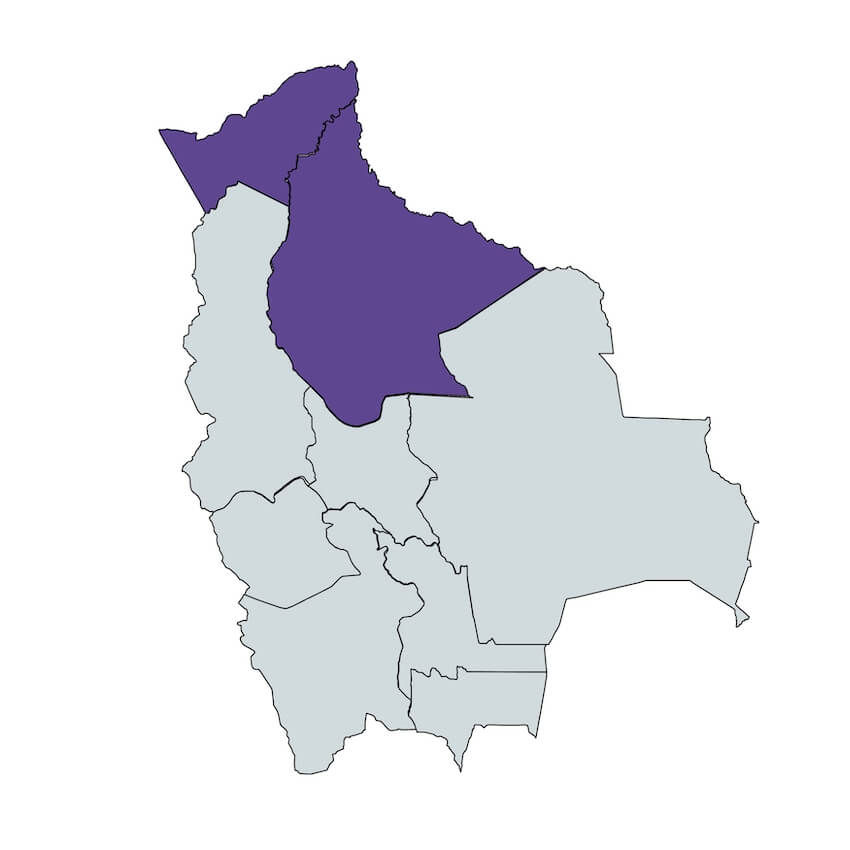
The first country that springs to mind when one talks about the Amazon is probably Brazil. However, covering a third of the country’s total territory, the Bolivian Amazon is just as diverse and important as that of its larger neighbour. And, in parts, just as impenetrable.
There are two main hubs for tourists who want to explore the area.
Trinidad is the place to go for those who crave the authenticity of “cruising” along a remote Amazonian river on a cargo boat, only stopping at tiny outposts of thatched dwellings to load and unload. And any creature comforts are very much left back at the hotel.
Rurrenabaque, however, has a well-established tourist programme of river cruises and expeditions into the rainforest.
For instance, during the dry season (usually May till October), the Rio Yacuma is a magnet for all manner of wildlife. Including caiman, pink freshwater dolphins and countless tropical birds. And tours that pass along the river usually end up at the swampy grasslands of the Pampas de Yacuma, where jungle lodges await.
Meanwhile, Parque Nacional Madidi, between Rurrenabaque and the Peruvian border, is an even more diverse area. With dense jungle lowlands, flooded savannahs, steep-sided cloudforests and glacial mountains, it’s a feast for the eyes.
What’s more, it’s possible to explore deep into its eco-system on multi-day trips from Rurrenabaque.
The Eastern Lowlands
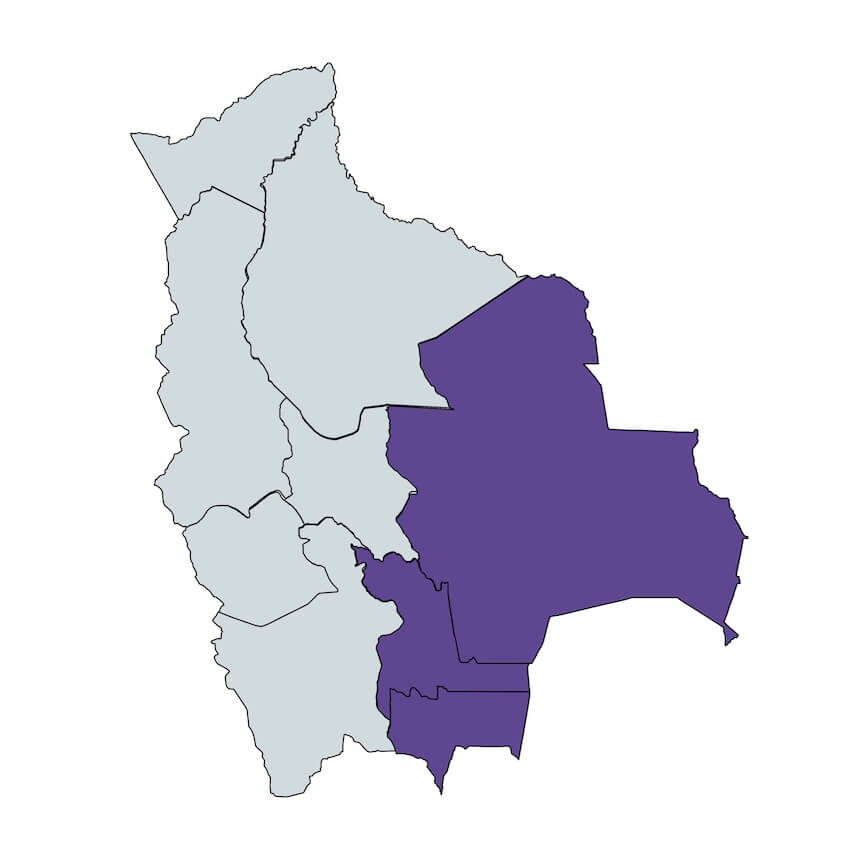 Bordering Brazil, Paraguay and Argentina, much of Bolivia’s eastern lowlands can be a challenge to visit.
Bordering Brazil, Paraguay and Argentina, much of Bolivia’s eastern lowlands can be a challenge to visit.
Vast and sparsely populated, most tourists head to the backpacker-friendly town of Samaipata, a 3-hour bus journey southwest of the region’s capital, Santa Cruz. Apart from being a laid-back place to stay, the surrounding countryside is full of hiking trails. Further afield, the pre-Inca UNESCO World Heritage Site of El Fuerte and the cloud forests of Parque Nacional Amboro are within easy reach.
To the east of Santa Cruz, the Jesuit Missions Circuit is a collection of six remote villages that are home to incredibly preserved Jesuit churches from the late 17th and early 18th Centuries. Recognised by UNESCO for their mixture of European Christian architecture and local indigenous traditions, they can be reached over the course of a week using buses. Or, to save time, you can take an organised tour from Santa Cruz.
The Southern Altiplano
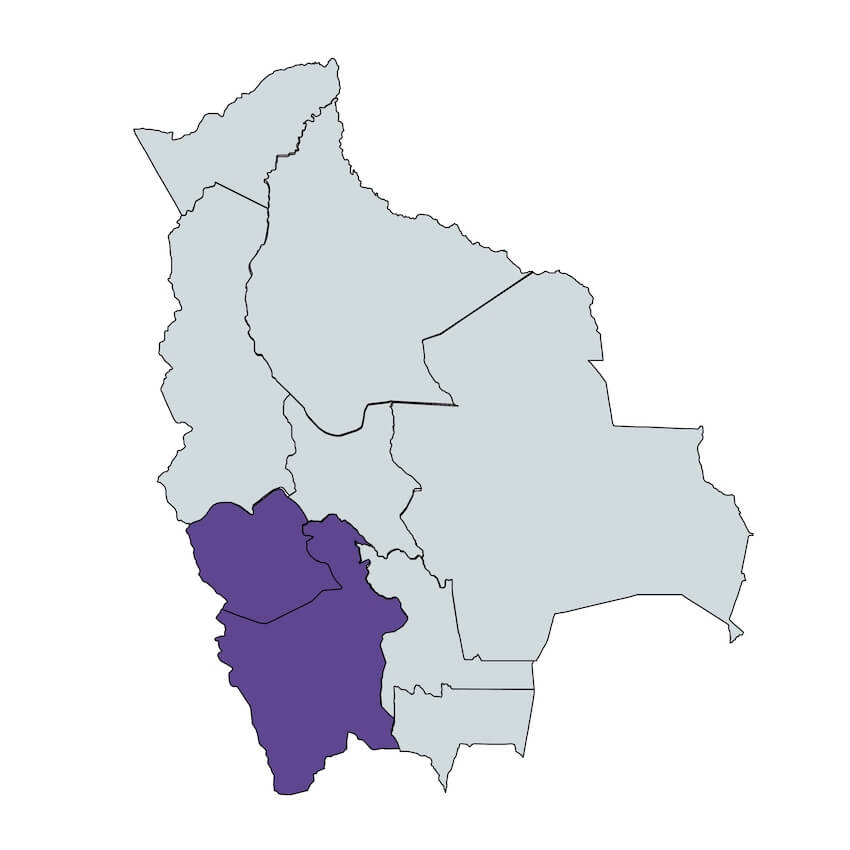 if you only have time to travel in one part of Bolivia, we’d suggest you concentrate your efforts here.
if you only have time to travel in one part of Bolivia, we’d suggest you concentrate your efforts here.
It’s a mixture of high-altitude plateau, mind-boggling scenery and historic towns famous for their silver and tin mines.
In the far south, close to the Argentinian border, the town of Tarija is situated in Bolivia’s little-known wine-growing country. Attracting 17th-Century wine growers from Andalusia in Spain, In truth, it doesn’t feel typically Bolivian. Indeed, the 17th-Century wine growers who settled here from Andalusia in Spain were as much attracted by the region’s fertile soil as they were by the arid mountain landscape, which reminded them of home.
To the west, the desert town of Tupiza is set amongst a dramatic mountainous landscape of red rock formations pitted with green cacti. Indeed, the area’s Wild West appearance is only enhanced by it also being the scene of Butch Cassidy and the Sundance Kid’s final stand before checking out in a hail of bullets. Allegedly.
There’s plenty to do in and around Tupiza itself, including horseriding, mountain biking and hiking. However, the real fun is to be had on a four-day jeep safari through the Reserva de Fauna Andina Eduardo Avaroa to the world-famous Uyuni Salt Flats.
Sure to be a highlight of your trip, the journey is nonetheless bone-crunching and bitingly cold at times. You can also do what most people do and take the three-day tour from Uyuni, 200 kilometres to the north. But you’ll then miss out on some of the amazing scenery nearer to Tupiza.
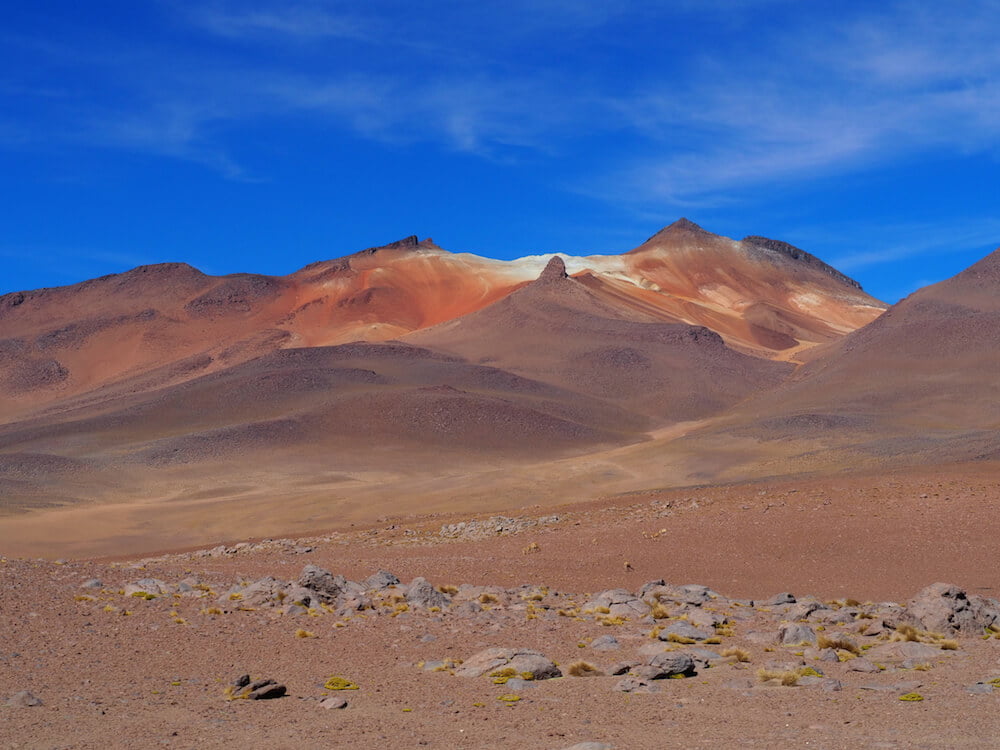
The Desierto de Dali, Bolivian Altiplano
250 km north of Tupiza, Potosi is a high-altitude city with an almost unimaginably tragic history. Built on the back of the nearby Cerro Rico (“Rich Mountain”) – the world’s largest ever source of silver – its prosperity was also created from the bowels of the mines that cost the lives of millions of indigenous “workers” and African slaves over three centuries – such were the conditions they were forced to work in.
The resultant city’s buildings are opulent. None more so than fortress-like Casa Real de la Moneda (“Royal Mint”), which can be visited on a guided tour.
Suffice it to say, it’s a beautiful city with a fascinating (if brutal) history.
OUR BLOG POSTS FROM THE REGION
Sucre and the Central Valleys
 It’s one of the world’s most incorrectly answered quiz questions: What is the capital city of Bolivia. Answer: La Paz? No, it’s actually Sucre, which also happens to be the country’s most beautiful city, too.
It’s one of the world’s most incorrectly answered quiz questions: What is the capital city of Bolivia. Answer: La Paz? No, it’s actually Sucre, which also happens to be the country’s most beautiful city, too.
Another UNESCO World Heritage site, it’s a gorgeous mix of colonial-era whitewashed buildings and red rooftops set in a lush, fertile valley. And with an indigenous population who still speak the Inca language of Quechuan.

The red rooftops and whitewashed buildings of Sucre
After our exertions of the previous few months, we found it to be a city where we could simply relax in our Airbnb-with-a-view, cook meals from fresh ingredients bought at the local markets and simply wander the streets during the day.
If you happen to be there over a weekend, the 60 km trip to the rural market town of Tarabuco is well worth the effort. Specifically for its Sunday market when the flamboyantly dressed Yampara people from the surrounding mountainside descend on the town to sell their wares. Including the weavings for which they’re famous.
You can get there on organised tours from Sucre. But if you want to beat the gringo crowds, jump on an early-morning collectivo instead
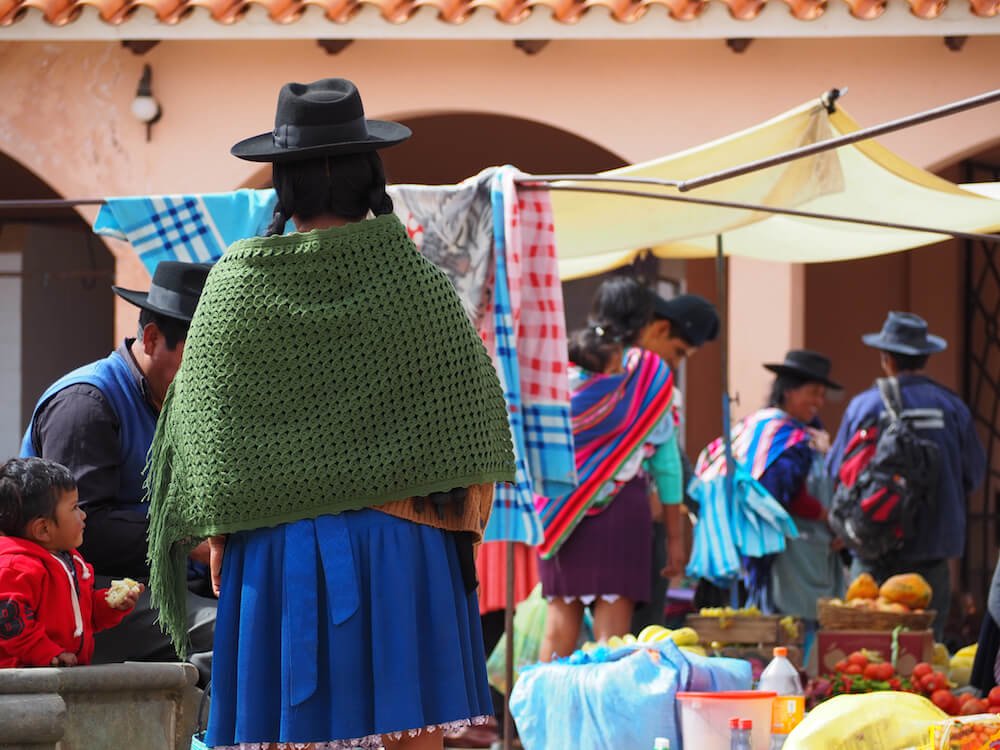
Tarabuco Market
OUR BLOG POSTS FROM THE REGION
Our Top 5 MOST BEAUTIFUL PLACES in Bolivia
ISLA DEL SOL, LAKE TITICACA
No paved roads or motorised vehicles. Just a few hundred indigenous families, together with their trusted llamas and donkeys. Oh, and high-altitude mountain scenery to die for. No trip to Lale Titicaca would be complete without spending at least one day on this magical island.
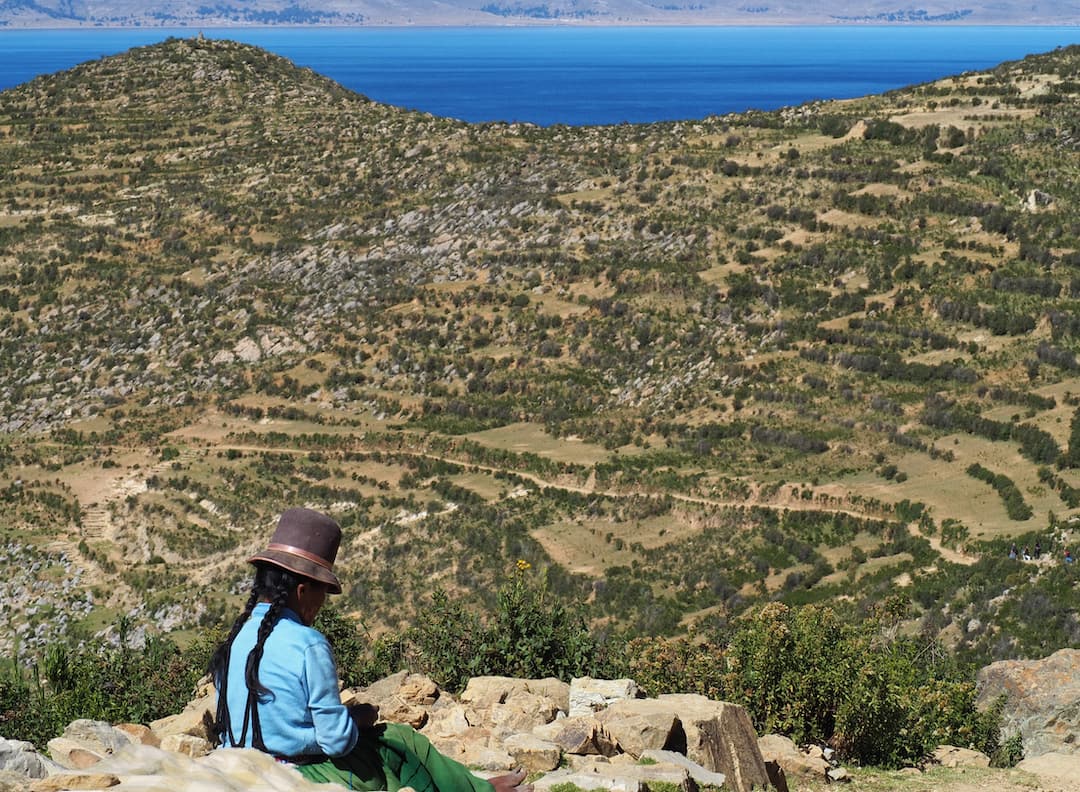
Isla del Sol, Lake Titicaca
SUCRE
Dubbed “The White City of the Americas”, Sucre is a beautiful city of whitewashed buildings and red rooftops. We only planned on visiting for a few days, but we loved it so much we stayed for ten.
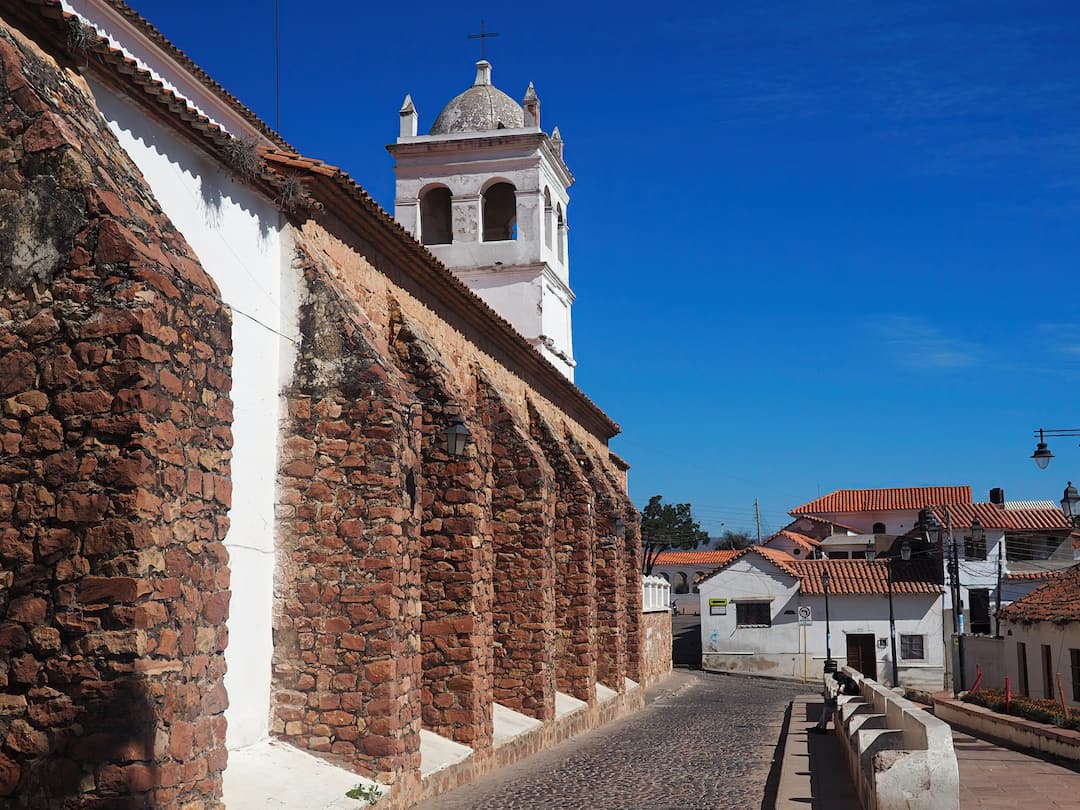
Sucre – “The White City Of The Americas”
LAGUNA COLORADA
One of the highlights of the Reserva de Fauna Andina Eduardo Avaroa is this high-altitude (4300 metres) pink-hued salt lake. Home to three species of pink flamingoes and many other rare forms of Andean wildlife, it’s a feast for the eyes. We visited it as part of our four-day jeep tour from Tupiza to Uyuni.

Laguna Colorada
SALAR DE UYUNI
The world’s largest salt flat, the Salar de Uyuni is an extraordinary place. Formed out of the total evaporation of several prehistoric lakes, the flat becomes flooded during the rainy season, creating a mirror-like appearance. It can be visited as part of an organised jeep tour from either Tupiza or Uyuni.
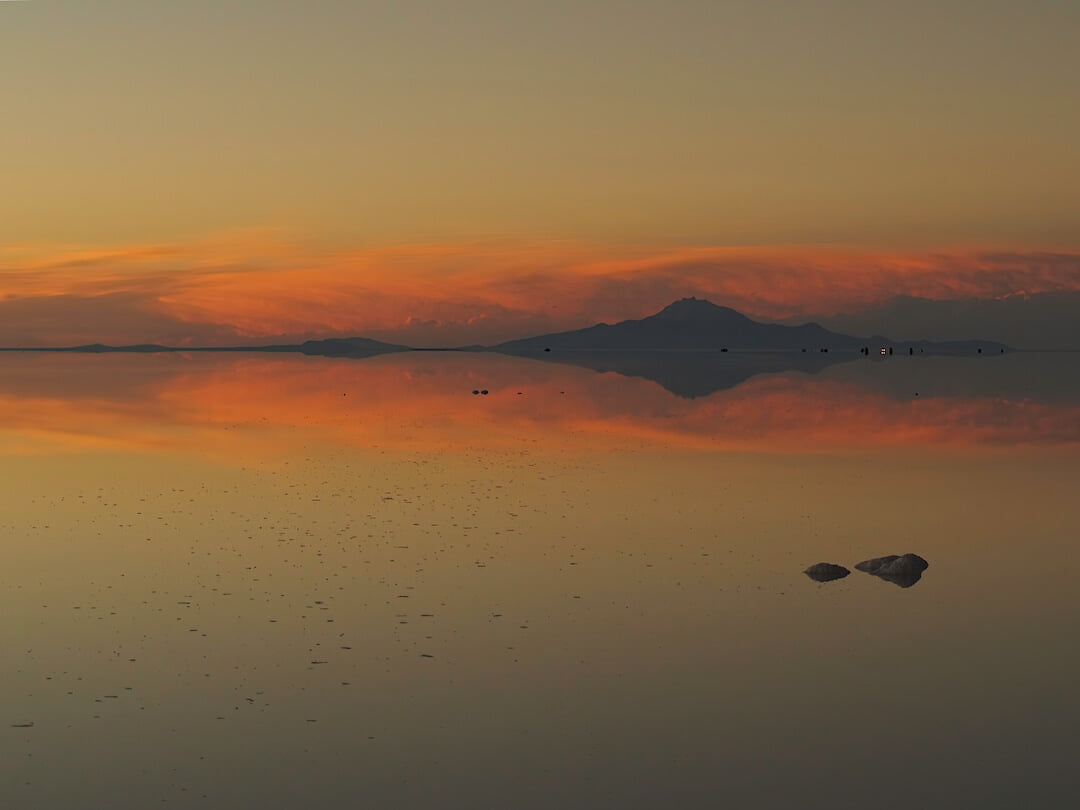
A flooded Uyuni Salt Flats at dawn
TUPIZA
Bolivia’s “cowboy country”. An isolated town set amongst a mountainous desert landscape of red rock formations. Indeed, it’s easy to imagine how Butch Cassidy and the Sundance Kid roamed the countryside before they met their demise some 100 kilometres north of here.
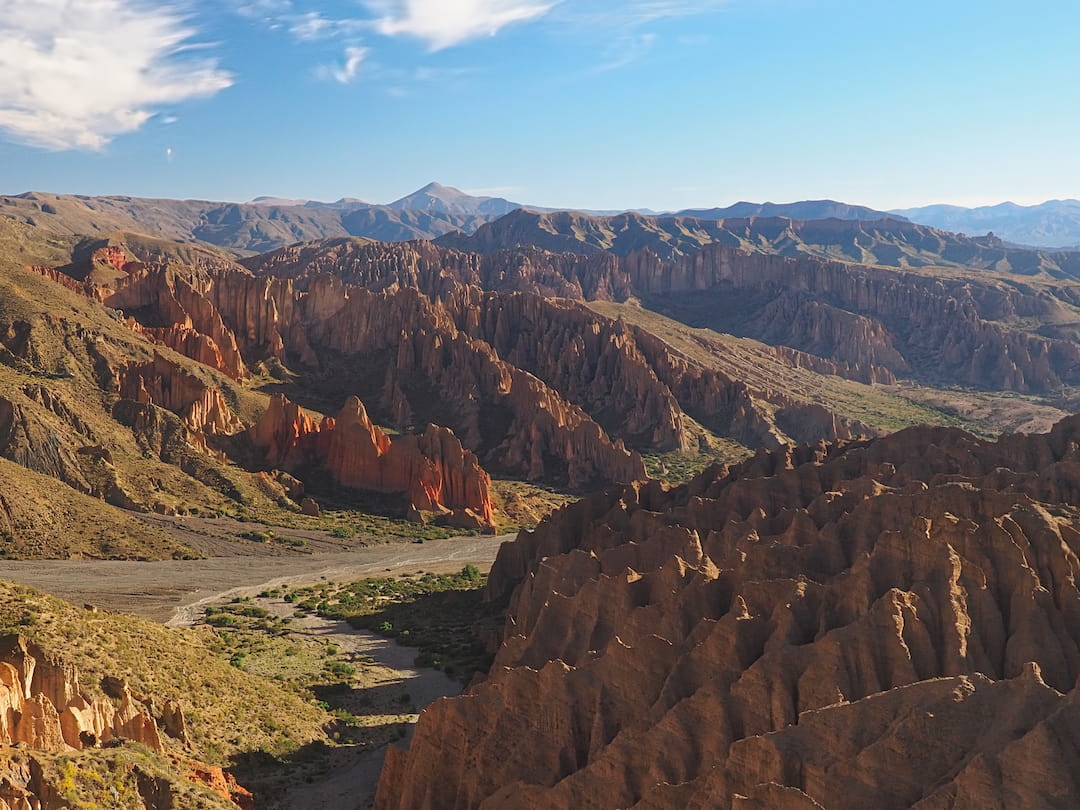
The landscape around Tupiza
How To Visit Isla Del Sol On Lake Titicaca
Tarabuco Market: In Search Of The Authentic Bolivia
A Four Day Odyssey To The Uyuni Salt Flats
When is the BEST TIME TO VISIT BOLIVIA?
Bolivia’s dry season is between April and October – which also happens to be winter. As a result, although there is little rain the temperatures can drop well below freezing at night, and especially in the highlands and the southern altiplano. But don’t be fooled – the sun during the day is extremely strong and so plenty of sunscreen is required.
The rainy season is between November and March. Although road conditions can be more challenging it’s a good time to see the amazing reflections of the Salar de Uyuni.
Do I need TRAVEL INSURANCE FOR BOLIVIA?
The simple answer is yes. Don’t try and take shortcuts with your budget by ignoring insurance. If something serious happens to you, the cost of emergency medical attention and repatriation could be excessive. Especially as much of the country is mountainous and remote.
You might consider the likes of flight cancellations or lost baggage to be risks you’re happy to take. But medical cover, personal liability and emergency assistance should be a given.
Ultimately the type of Bolivia travel insurance you need will depend on your own individual circumstances. We can recommend two insurance providers.
Being UK-based we use TrueTraveller, who offer a range of products to cover holidaymakers, adventure travellers and backpackers.
For non-UK based travellers, we can recommend SafetyWing, who provide global travel medical insurance for nomads all over the world.
Do I need a TOURIST VISA to enter Bolivia?
Possibly – depending on what passport you are travelling on. For instance, tourist visas are not required for travellers with a UK passport. However, at the time of writing (December 2022) USA passport holders must purchase a visa at a cost of $160 USD.
To help you establish your own specific requirements, here’s an excellent tool courtesy of Bolivia Hop.
What are the VACCINATION ENTRY REQUIREMENTS FOR BOLIVIA?
For the latest Bolivia travel restrictions and health-related requirements, please check this free online tool, courtesy of SafetyWing.
Is Bolivia SAFE TO VISIT?
Generally speaking, Bolivia is a safe destination for holidaymakers and travellers, as long as sensible precautions are taken (such as not walking along unlit streets at night, accepting drinks from a stranger, or flashing expensive jewellery).
As in any major city, there are areas best avoided at night. Likewise, muggings and scams do happen.
For an up-to-date assessment, we’d recommend checking with your own country’s current safety warnings on Bolivia. Although they can sometimes appear alarmist, at least you’ll be aware of what CAN happen. As Brits, we use the UK Foreign Office’s travel advice.
SUCRE
Dubbed “The White City of the Americas” and Bolivia’s most beautiful city
TARABUCO
Blog post: Tarabuco Market – In Search Of The Authentic Bolivia
TUPIZA
Remote town set amidst a rugged landscape of red rock formations, and green cacti
LA PAZ
Bolivia’s bustling de facto capital (the official capital is Sucre)
COPACABANA
Lakeside resort and jumping off point for tours to Isla del Sol and lots more
ISLA DEL SOL
Road-free island in the middle of Lake Titicaca with glorious hiking trails
Blog post: How To Visit Isla Del Sol On Lake Titicaca
UYUNI SALT FLAT (SALAR DE UYUNI)
The world’s largest salt flat, accessible on jeep tours from Uyuni and Tupiza – and one of the most famous places in Bolivia
Blog post: A Four-Day Odyssey To The Uyuni Salt Flats
LAGUNA COLORADA
High-altitude pink-hued lake, home to pink flamingoes and other Andean wildlife
TRINIDAD
Gateway to slow boat journeys along a remote Amazonian river
RURRENABAQUE
Tourist hub for Bolivia’s Amazon region
SAMAIPATA
Backpacker’s favourite with plenty of hiking and the nearby pre-Incan site of El Fuerte
SANTA CRUZ
Bolivia’s largest city and gateway to the Jesuit Mission Circuit of the Chquitos region
TARIJA
Relaxed town situated within Bolivia’s remote wine-growing region
POTOSI
Historic silver and tin mining city with a tragic past
THANKS FOR READING
Hi, we're Ian and Nicky, an English couple on a voyage of discovery around the world, and this blog is designed to reflect what we see, think and do. Actually, we'd like to think it also provides information, entertainment and inspiration for other “mature” travellers, too. So please feel free to pour yourself a glass of something suitably chilled and take a look around.


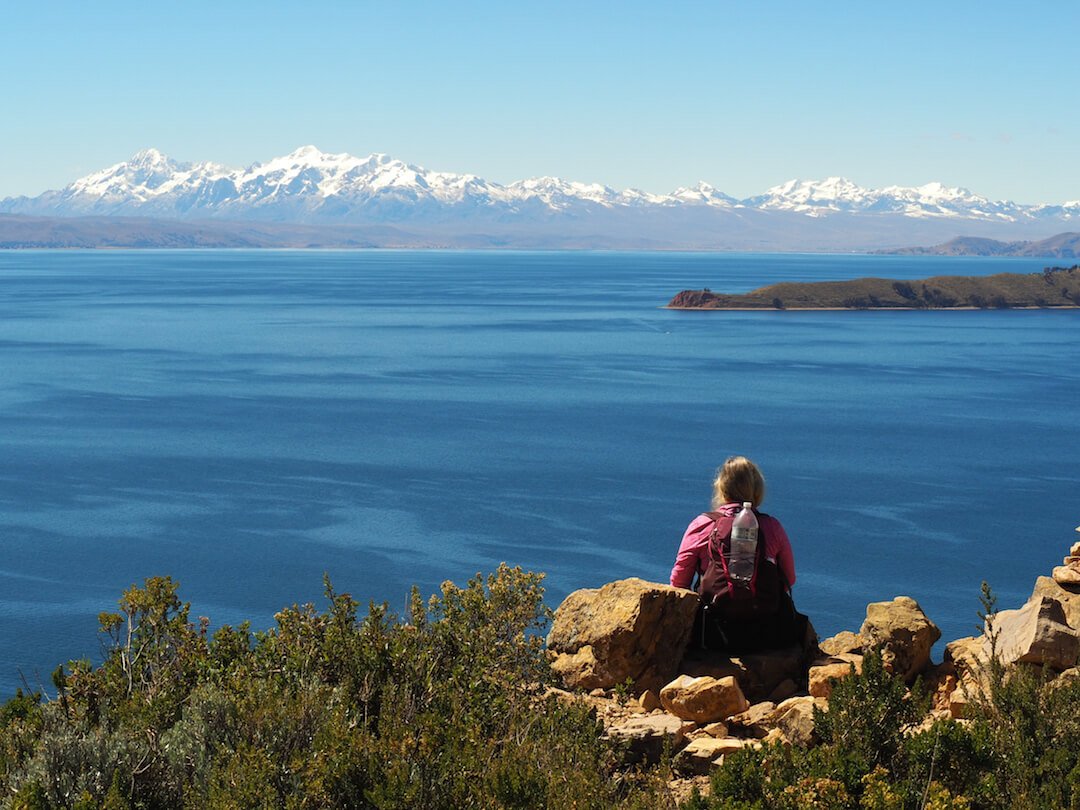

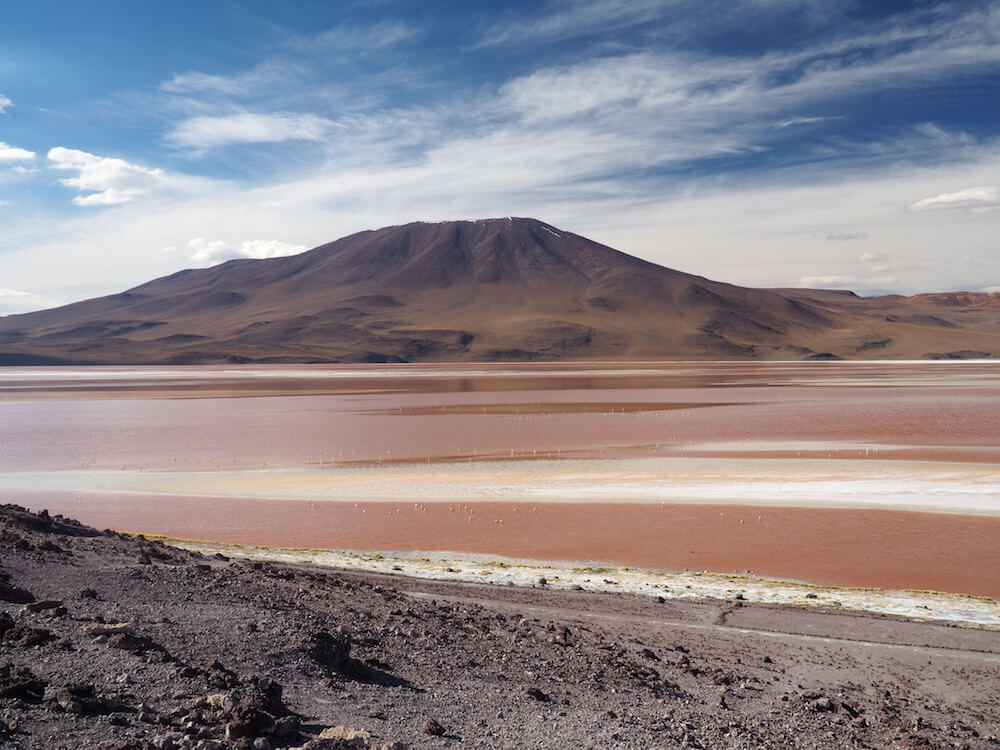

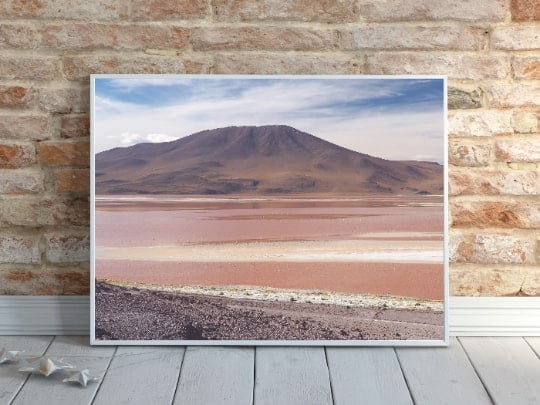

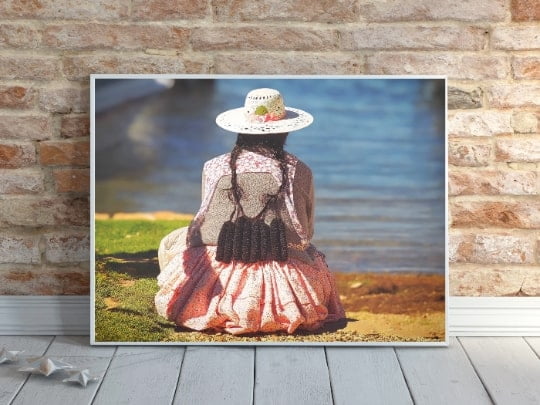

0 Comments